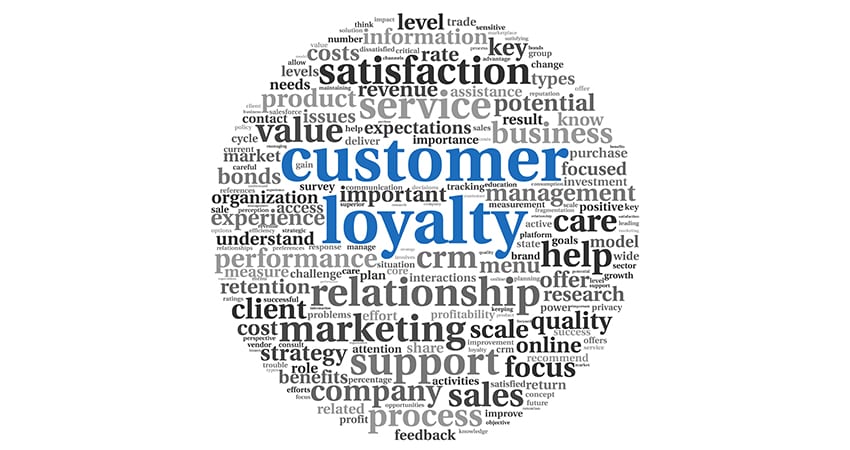It’s a pretty disloyal world out there, but can you really blame the consumer? Online shopping has never been easier, and stores have been stepping over each other to see who can offer the deepest discount. While discounting your way to a one-time purchase might work in the short term, at the end of the day, you need to aim for a higher prize: customer loyalty.
Many retailers attempt to accomplish this with an official loyalty program. There’s just one problem – they rarely work.
What’s Your Loyalty Program Really Worth?
Have you ever eaten at a terrible restaurant but continued to go back because of their loyalty program? Of course not! Seinfeld did an entire episode on this, so you know it’s worth questioning. These days, most loyalty programs have simply outgrown their usefulness – and they no longer create loyalty.
A while back, I was speaking with someone at Macy’s about the retail landscape. When I asked about their biggest competitor, he said it was Amazon. Is anyone shocked? Then we got onto the topic of loyalty programs. As he explained theirs, I was a bit puzzled. Here’s why.
First, you need a Macy’s credit card to be eligible, which eliminates many people right from the start – those who either don’t want another store credit card or aren’t yet loyal enough to Macy’s to want theirs. At a high level, If someone spends $500 in a year, they qualify for free shipping for the rest of the year. Is free shipping really a perk anymore, especially when the free shipping threshold on the site is only $25? These members are likely getting this “perk” anyway.
At $1,200, you earn 5% cash back on purchases, which equates to $60. Will that $60 be what prevents someone from shopping elsewhere? Remember: This person likely won’t even qualify for these perks from day one of the year, unless they buy some high-ticket items. That means they may only receive these benefits for part of the year. Come January 1, they’re back to square one.
I can’t help but think that a Macy’s credit card holder who spends $1,200 each year is already fairly loyal. And with Amazon as their biggest competitor, why should shoppers spend $500 to get free shipping when they can get the same perk for just $99?
Let’s look at another well-known brand: Starbucks. Everyone I know who drinks Starbucks coffee is pretty loyal to that brand, and it’s not because of their rewards program. It’s the customer experience. Of course, they have drive-through locations, which is convenient, but they also offer a great in-store experience. Their app allows you to order ahead, and they offer mobile payment options. Their baristas are friendly, and the store is inviting. Simplicity and convenience. Will people be more loyal to Starbucks because of the rewards program? I highly doubt it.
Bruegger’s Bagels offers a bottomless mug program, which is more or less a membership program. The price of the mug can vary by location. By my house, it’s $185 for 365 days of free refills on coffee, tea, or soda. The program is simple. One price, one benefit, for one year. At around $2 for a small coffee, frequent visitors can really rack up some savings.
But would a first-time or infrequent customer buy the bottomless cup? Not likely.
That’s a big investment for a casual visitor. While I do think it has the potential to bring an already frequent customer into the store slightly more often, I think they missed the mark of what I see as their true goal – selling food. I assume Bruegger’s is banking on customers ordering some food while waiting in line for their bottomless mug refill. But what would compel a person to make that extra purchase? I bet an incentive of 5-10% off food purchases (with cup in hand) would do the trick.
Amazon doesn’t even have a loyalty program. They have a membership program, yet people are still very loyal to them – including some Macy’s shoppers. The perks of membership, such as the convenience of quick, free delivery and access to streaming video, work to keep people shopping with them. Prime members spend roughly $1,300 a year on Amazon, almost double that of non-members. They also get cash back with an Amazon credit card (like Macy’s), but the card is not a requirement for membership. Their customer experience is why over 80 million U.S. households choose to pay for Prime membership.
What Does it all Mean?
Most loyalty programs don’t seem to generate loyalty anymore. Strong brands that provide consistently good experiences are the ones earning their customers’ loyalty. If Amazon had horrendous service and delivered a poor experience, shoppers wouldn’t keep going back to them time and time again.
Maybe we should just remove the term “loyalty program” from our lexicon altogether and refer to them as what they are: rewards programs. If done right, rewards programs can be used to create and foster customer engagement, which helps create that all-important emotional connection. Think beyond the traditional model of “buying products to accumulate points” and reward customers for interacting with your brand. Invite them to play a game or write a review to earn rewards.
If you’re banking on a loyalty program to keep customers from straying, you’ve already lost them. Take a hard look at your program. Could the time and effort of maintaining it be better spent engaging your audience with more personalized email, social media and other marketing strategies? At the end of the day, the success of your program is only as good as the success of your brand.
Greg Zakowicz is a Senior Commerce Marketing Analyst at Bronto Software

